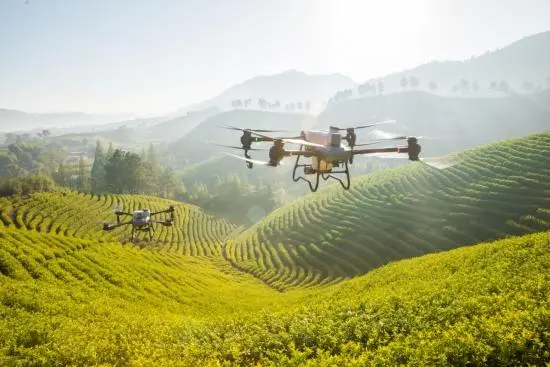The unmanned farm based on the technology of Academician Zhao Chunjiang’s team and Northeast Institute of Geography, Chinese Academy of Sciences, has been fully completed and put into use, exploring a path of ecological cycle and comprehensive green development.
Entering an unmanned farm, on the dark land, the green corn seedlings have already been covered in ridges, much higher than the corn in the field. This is the result of application demonstration of organic waste fertilizer technology in the scientific and technological battle of “black soil granary” of Northeast Institute of Geography and Agroecology, Chinese Academy of Sciences.
Organic waste fertilization is the process of turning manure into organic fertilizer, “said researcher Wang Lixia. Organic waste fertilization technology can reduce non-point source pollution caused by manure. After winter composting, the fecal waste rises to 55 degrees Celsius, which can kill a large number of pathogenic bacteria and achieve harmless treatment.
As an important aspect of black soil protection, increasing the application of organic fertilizer and improving soil fertility is crucial. After the autumn harvest, the organic fertilizer composting site on an unmanned farm composts straw and livestock manure in situ. The composting automatic control system is used to monitor the temperature, oxygen, and carbon dioxide of the compost in real-time, and adjust the ventilation during the composting stage based on the data to quickly decompose the materials. At the same time, it can also reduce the emissions of toxic and harmful gases such as greenhouse gases and ammonia during the composting process. The fully decomposed manure, combined with fertilization technology, is returned to the soil to improve soil structure and soil fertility. At present, this technology has been promoted over 100000 acres in Gongzhuling and other areas.
Fanjiatun Town Qiancheng Farmers’ Professional Cooperative has transferred over 300 hectares of land this year, using organic waste fertilization technology. Now it seems that the emergence rate of corn in the field has basically reached the full seedling state, and the seedling roots are strong, the color is thick green, the soil is breathable and permeable, and the nutrient content is much higher, “said Wang Chengxin, the head of the cooperative with joy.
In 2022, Professor Zhong Rongzhen from the Northeast Institute of Geography and Agroecology of the Chinese Academy of Sciences carried out research and demonstration projects on key technologies of straw feeding and green beef cattle breeding. Compare the feeding effects of corn straw yellow storage feed, gas explosion puffed straw, and untreated dry corn straw. Evaluate the feed conversion rate, rumen fermentation, meat quality, and intestinal health indicators, and propose suitable feeding methods for beef cattle at different stages, greatly improving the feed utilization rate of corn straw.
In the sunlight greenhouse of an unmanned farm, seedlings are cultivated using a substrate made of straw and neatly laid on the seedbed, growing happily, creating a lively scene inside the greenhouse.
In addition to using straw as feed, the research institute has also established a demonstration platform for planting and breeding circular agriculture on the farm, customizing corn straw and achieving its substrate transformation.
Corn straw substrate transformation is the use of straw as the main material, combined with cow manure to make a nutrient base, replacing peat soil as the seedling substrate, to achieve the recycling of planting and breeding. The raised seedlings have high quality, especially rice seedlings that can be tillered and lowered to the ground, which can increase yield by 3% -5%.
In addition to the rice seedling substrate, there are also applications of characteristic mushroom and vegetable cultivation substrate utilization technologies such as blueberries, morel fungus, and elm yellow mushroom in unmanned farms. Through feed, fertilizer, and substrate utilization, straw is 100% recycled.
In the future, Gongzhuling will deeply implement the principle of “storing grain in the land and storing grain in technology”, accelerate the integration of agriculture and technology, tell more new stories in the construction of the “100 billion kilogram grain” project, take greater steps in improving grain production capacity, and continue to maintain stability and progress on the path of guarding the granaries of major countries.







Please sign in to comment
register